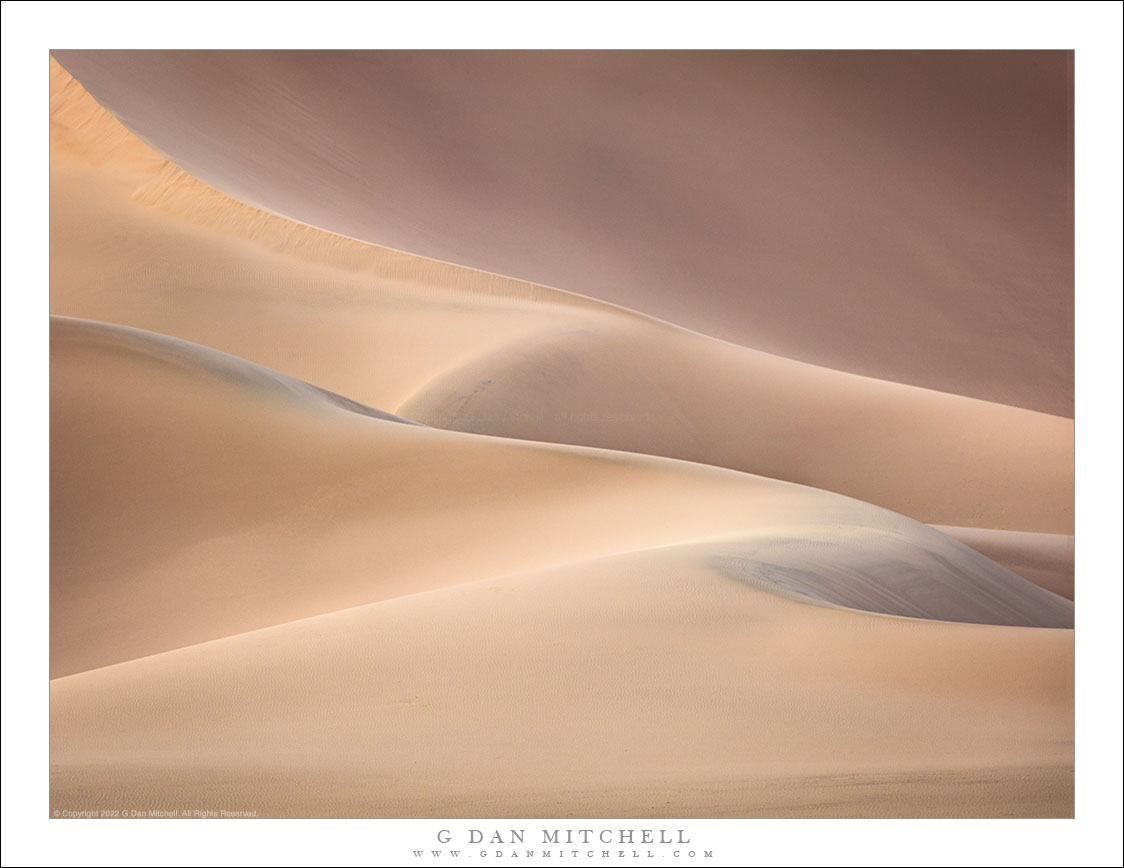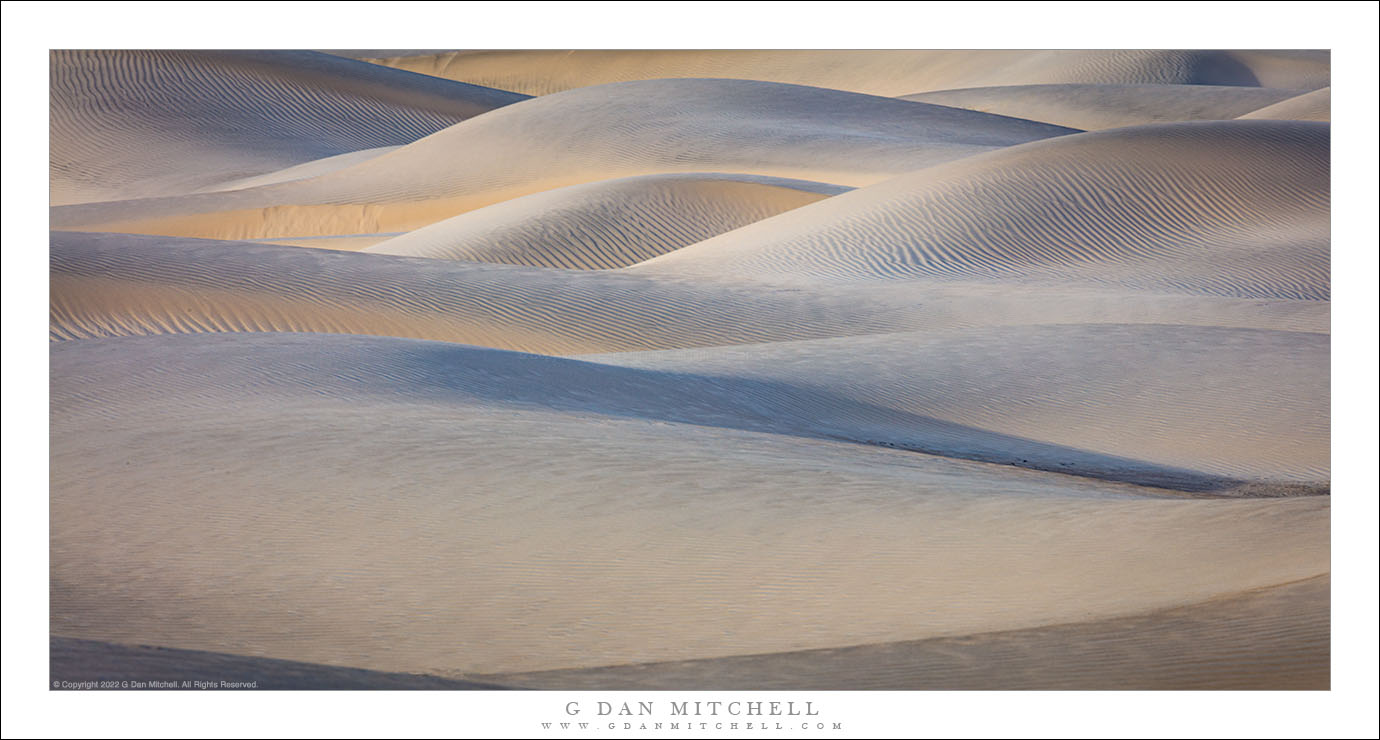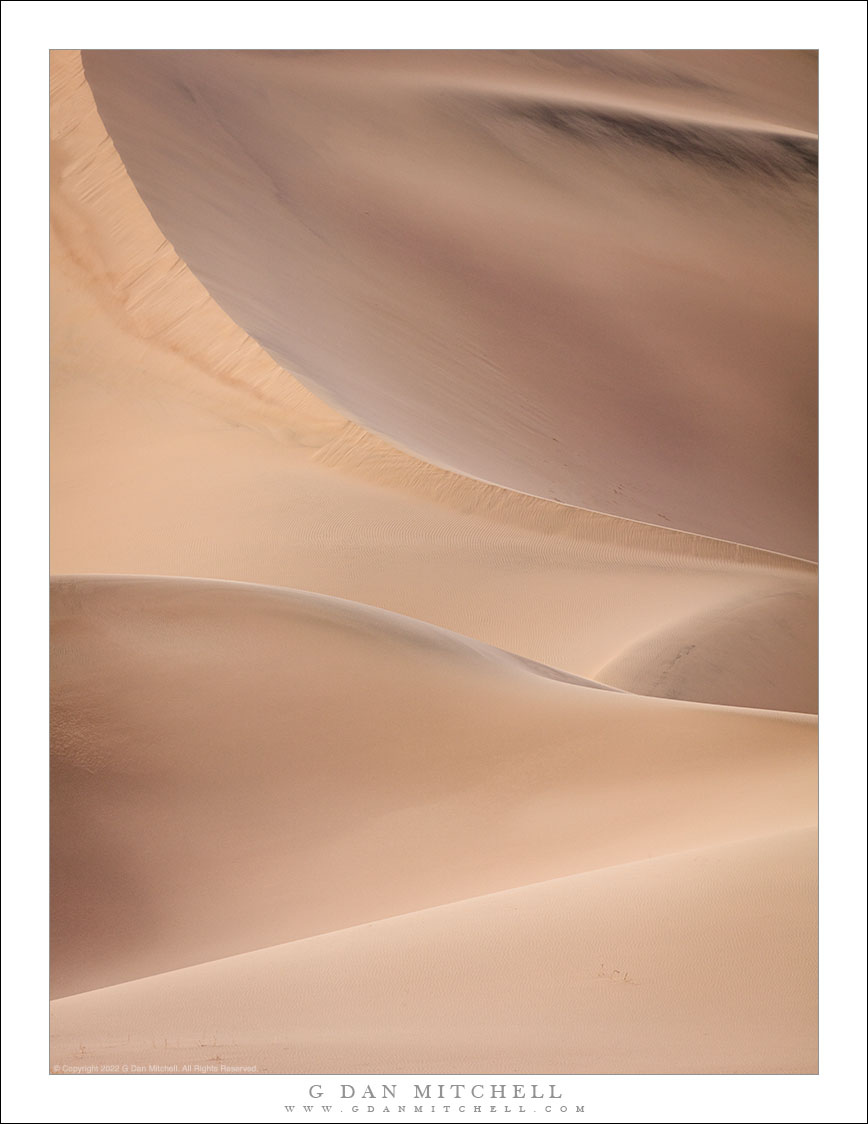
Dunes, Soft Light. © Copyright 2022 G Dan Mitchell.
Details of sand dunes in soft evening light, Death Valley Naitonal Park.
Sand dunes are fascinating subjects, both for their appearance as part of the larger landscape and because they contain infinite varieties of smaller subjects, textures, colors, and variations in light. I made a wild guess recently that I’ve probably been to Death Valley perhaps twenty-five times. You’d think that I might start to tire of the dunes or run out of things to photograph there… but there’s no sign of this happening.
We went to these dunes late in the day and had them entirely to ourselves. The light was challenging, as clouds were building to the west. As the clouds moved the light increased and decreased, but overall it remained quite soft. But this just provided another variation on how we can photograph this subject, and the soft light reveals some subtle details that can get lost in brighter conditions. I made some post-processing choices here that highlight the variations in light and the soft forms of the dunes.
G Dan Mitchell is a California photographer and visual opportunist. His book, “California’s Fall Color: A Photographer’s Guide to Autumn in the Sierra” is available from Heyday Books, Amazon, and directly from G Dan Mitchell.
Blog | About | Flickr | Facebook | Email
Links to Articles, Sales and Licensing, my Sierra Nevada Fall Color book, Contact Information.
Scroll down to leave a comment or question. (Click this post’s title first if you are viewing on the home page.)
All media © Copyright G Dan Mitchell and others as indicated. Any use requires advance permission from G Dan Mitchell.



